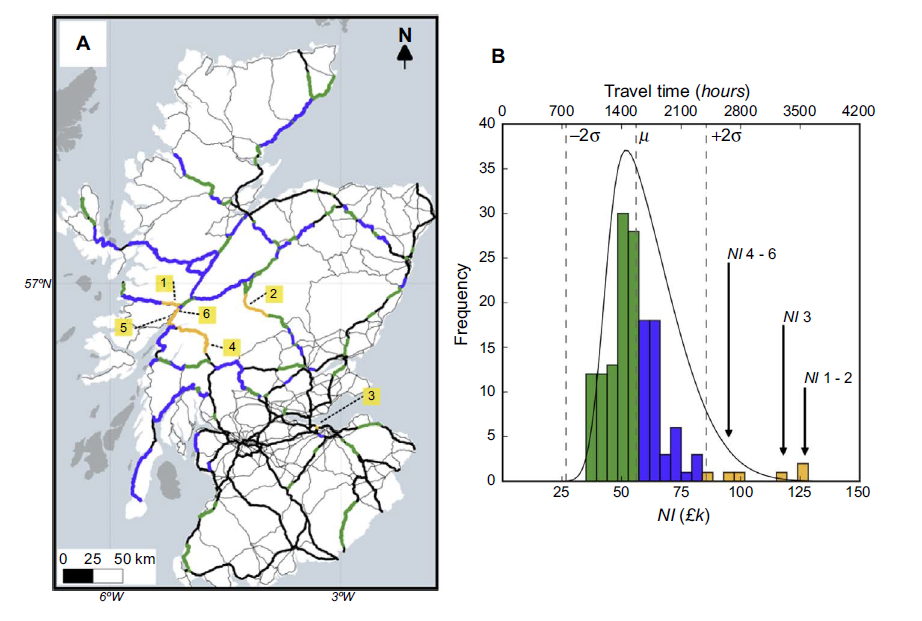
Link to my 2017 paper in ERL.
Abstract
Disruptions to transportation networks by natural hazard events cause direct losses (e.g. by physical damage) and indirect socio-economic losses via travel delays and decreased transportation efficiency. The severity and spatial distribution of these losses varies according to user travel demands and which links, nodes or infrastructure assets are physically disrupted. Increasing transport network resilience, for example by targeted mitigation strategies, requires the identification of the critical network segments which if disrupted would incur undesirable or unacceptable socio-economic impacts. Here, these impacts are assessed on a national road transportation network by coupling hazard data with a transport network model. This process is illustrated using a case study of landslide hazards on the road network of Scotland. A set of possible landslide-prone road segments is generated using landslide susceptibility data. The results indicate that at least 152 road segments are susceptible to landslides, which could cause indirect economic losses exceeding £35 k for each day of closure. In addition, previous estimates for historic landslide events might be significant underestimates. For example, the estimated losses for the 2007 A83 ‘Rest and Be Thankful’ landslide are £80 k day−1, totalling £1.2 million over a 15 day closure, and are ~60% greater than previous estimates. The spatial distribution of impact to road users is communicated in terms of ‘extended hazard impact footprints’. These footprints reveal previously unknown exposed communities and unanticipated spatial patterns of severe disruption. Beyond cost-benefit analyses for landslide mitigation efforts, the approach implemented is applicable to other natural hazards (e.g. flooding), combinations of hazards, or even other network disruption events.
That’s all folks
Thank you for reading.
Ben Postance
1: https://iopscience.iop.org/article/10.1088/1748-9326/aa5555